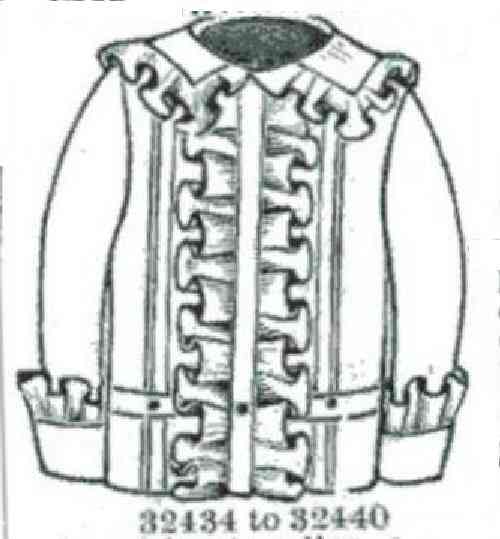
Figure 1.--This is one of the styles of shirt waists offered by Wards in 1895. They were made in sizes 4-13 years of age. Note the waist buttons.


Figure 1.--This is one of the styles of shirt waists offered by Wards in 1895. They were made in sizes 4-13 years of age. Note the waist buttons. |
Blouse and shirt waists had no tails. They were made for both children and women. They either butoned on to the pants or underwaists or had draw strings to close them at the waist. Generally blouse waists were for younger boys thasn shirt waists, but here manufacturers and retailers were not always consistent about how they used these terms. We have some information from the 1895 Ward's catalog on these garments. We note these waists being made for boys up to 14 years of age. Neither style is tucked into the knee pants with which they would have been worn. The "Shirt Waists" have no waist buttons at the bottom hem and were worn over the waistline of the knee pants. Note that the hem is straight and comes down just an inch or two over the trousers. The "Blouse Waists" are bloused and have a draw-string in the bottom hem so that that the hem can be tightened around the waist to create the blousing effect. These were probably also worn outside the trousers (i.e., knee pants).
Although the word "consumerism" has a modern ring, it was personal concern for an early consumer movement, the "National Grange of the Patrons of Husbandry,"That inspired a young traveling salesman named Aaron Montgomery Ward to start the world's first general merchandise mail-order company in 1872. Aaron Montgomery Ward was born on February 17, 1844, in Chatham, New Jersey, to a family whose forebears had served as officers in the French and Indian Wars as well as in the American Revolution. Looking for something more compatible, Monty left home and followed the river to Lake Michigan and the town of St. Joseph, county seat and market for outlying fruit orchards. Chicago was the center of the wholesale dry goods trade and in the 1860s Ward joined the leading dry goods house, Field Palmer & Leiter. As a retailer, Potter Palmer had previously built a reputation for fair dealing. Ward absorbed these principles while working as a clerk
for $5. The Chicago City Directories for 1868 through 1870 listed Ward as a salesman for Wills, Greg & Co. and later for Stetthauers & Wineman, both dry goods houses. In 1870, after canvassing territory in Illinois, Iowa, Missouri, Ward was again footloose. The plan shaping in Ward's mind was to buy goods at low cost for cash. By eliminating intermediaries, with their markups and commissions, and cutting selling costs to the bone, he could offer goods to people, however remote, at appealing prices - for cash. Since its founding in 1872, the company has literally "grown up with America" and has had a major impact on the shopping habits of a nation of consumers. Montgomery Ward & Co. discontinued its catalog operations in 1
985 as part of its restructuring effort to change itself into a modern, competitive chain of value-driven specialty stores, a move which for a time saved the company. week.
We have some information from the 1895 Ward's catalog on these garments. We note these waists being made for boys up to 14 years of age. Neither style is tucked into the knee pants with which they would have been worn. The "Shirt Waists" have no waist buttons at the bottom hem and were worn over the waistline of the knee pants. Note that the hem is straight and comes down just an inch or two over the trousers. The "Blouse Waists" are bloused and have a draw-string in the bottom hem so that that the hem can be tightened around the waist to create the blousing effect. These were probably also worn outside the trousers (i.e., knee pants).
The Ward's blouse waists have drawstrings as waist closures. This is not really noticeable in period photographs. But probasnly is the waist blouces out it had a drawstring and was a blouse waist. This can be seen in the illustrations, but is not mentioned in the ad copy. This appears to be the destinguishing characteristic of the blouses. They are made for boys age 4 to 13 years of age. This is the same for both the blouse waists and shirt waists.
Ward's does not explain the difference between the blouse and shirt waists they offer. Based on the illustrations the difference appears to be that the shirt waists have buttons at the waistr rather than drawstrings like the blouse waists. The Ward's ad copy reads, "Boys' Shirt Waists. Weight of cotton waists, 4 to 5 ounces; blue flannel waists, 6 to 8 ounces. Sizes 4 to 13 years."
Blouse and shirt waists had no tails. They were made for both children and women. They either butoned on to the pants or underwaists or had draw strings to close them at the waist. Generally blouse waists were for younger boys thasn shirt waists, but here manufacturers and retailers were not always consistent about how they used these terms.
Navigate the Boys' Historical Clothing catalog/magazine pages:
[Return to the Main American mail order 1895 page]
[Return to the Main American mail order 1890s page]
[Main photo/publishing page]
[Store catalogs]
[Fashion magazines]
Navigate the Boys' Historical Clothing Web Site:
[Introduction]
[Activities]
[Biographies]
[Chronology]
[Cloth and textiles]
[Clothing styles]
[Countries]
[Topics]
[Bibliographies]
[Contributions]
[FAQs]
[Glossaries]
[Satellite sites]
[Tools]
[Boys' Clothing Home]
Navigate the Boys' Historical Clothing Web Site:
[Sailor hats]
[Unidentified cap]
[Sailor suits]
[Buster Brown suits]
[Eton suits]
[Rompers]
[Tunics]
[Smocks]
[Pinafores]
[Pinafores]
[Underwear]
[Stocking supporters]
